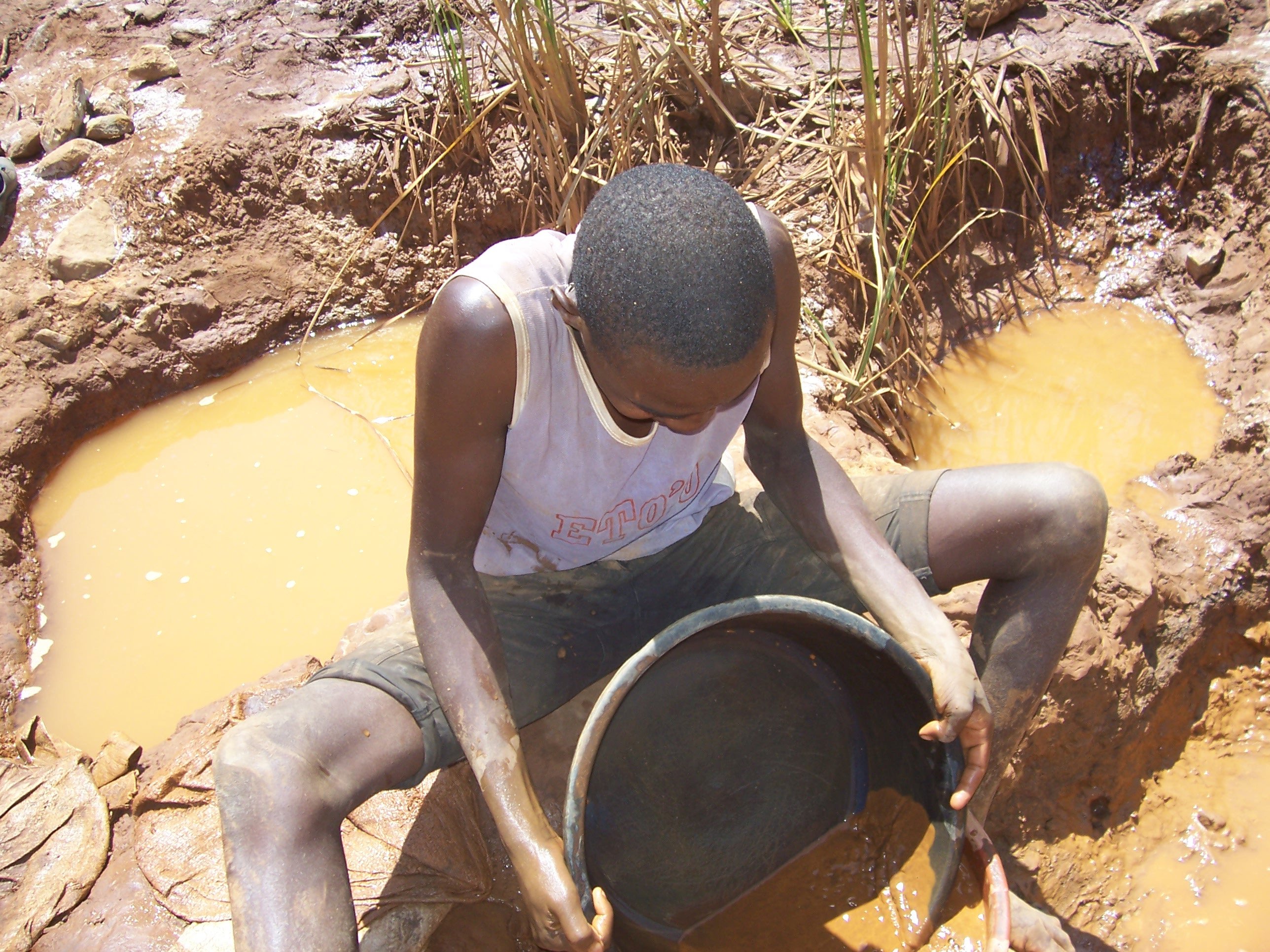“I would rather work for people here at the mine and at the end of the day they will give me money to spend," he told IRIN.
"Even my parents say what I am doing is right; I can buy my own clothes. What is the point of being in school?” There are few formal job opportunities in the region.
Jacob’s employer for the day - one of many people who rent a section of the mine on a daily basis - will pay him 100 shillings (US$1.20) for his labour. A gram of gold sells for around $55 on the world market.
"We are told those who have employed us are rich, but me, I just want a little money to buy good clothes and food for my mother. I don't want to be rich," said another child.
An estimated 15,000 children are working in gold mines in the districts of Nyatike and Migori in western Kenya’s Nyanza province, either in actual extraction or in ancillary services such as selling food, according to the local Children’s Welfare Office. This number rises significantly at weekends and during school holidays.
Some, like Jacob, end up missing school altogether. "When you look at the levels of school drop-outs... the closer a school is to a gold mine, the higher the rates of [decline] in school attendance," said Geoffrey Cherongis, the Nyanza provincial director of education.
Poverty factor
“We know the dangers of involving children in gold mining, both in terms of losing school days and damaging their health, but we rely on the goodwill of people to report cases but this doesn’t happen often because parents encourage their children to seek employment at the mines," said Emily Waga, a senior children’s officer in Migori. “When people are poor, nothing that brings in income is dangerous."
Jack Omoro, a government official in one of the mining areas, said his efforts to persuade parents to keep their children in school had been in vain.
“One thing that has held us back is that while we promote education, there is little to end the cycle of poverty that creates this problem in the first place,” he said.
“A parent will find it hard to send a boy to school when that boy can bring back income that very evening when employed at the mine,” he added.
Exploitation
The children’s services department has set up toll-free telephone lines to report cases of child abuse, said Ahmed Hussein, a director at the department. Referring to existing child protection legislation, Hussein said that no child should be denied a right to education because they are earning money to feed families.
Children under 18 constitute 30-50 percent of the total workforce in small-scale gold mines across Africa, according to the UN International Labour Organization.
Gold was first discovered in Migori in the 1930s, with initial prospecting activities involving large mining companies. At present, small-scale companies and artisanal miners work the deep and waterlogged tunnels left by the old companies - the pure gold deposits there are worth about KSh64 billion (about $764 million) according to estimates by the Department of Mines and Geology.
But residents continue to live in poverty exploited by middlemen.
|
Photo: Kenneth Odiwuor/IRIN |
| The region's pure gold deposits are estimated to be worth about US$764 million |
James Ochoro, a resident, added: “We have gold on our land but we are poor and we live like squatters; it is the middlemen who benefit from our gold.
"Our children drop out of school because they have to supplement our meagre incomes,” said Ochoro. “Here, we work ourselves to death with our children."
Health concerns
The use of mercury to amalgamate small particles of gold is also a source of concern because of its high toxicity and detrimental impact on children’s development.
“The damage from mercury on people’s health, including children, is there because they have been exposed for a long time,” said Hillary Okoth, a clinical officer at Migori District Hospital.
“What is lacking is the capacity among health workers to diagnose the symptoms of such damage. I think it is time the government moved in to sensitize and train health workers to diagnose and treat such damage once detected,” added Okoth.
Dusty conditions in the mines, where protective masks are not used, may also contribute to Migori having the province’s highest prevalence of TB - 37 percent - as well as to high rates of respiratory tract infections.
"Governments must have strong laws in place, enforce the laws through awareness-raising and labour inspections, and take steps to assist children transition from child labour into education,” Juliane Kippenberg, a senior children’s researcher at Human Rights Watch, told IRIN. “For this, access to education must be improved.”
According to Nyatike agriculture officials, the over-reliance on gold mining is leading to food insecurity, with at least 69 percent of the population affected.
"Nyatike is extremely food-insecure because people have abandoned farming to rely solely on mining as a source of income,” Joash Otieno Owiro, the Nyanza Provincial Director of Agriculture, told IRIN.
“The area continues to be food-insecure and those with money have to travel to other districts to get food, yet the place is on very fertile soil."
*Not his real name
ko/js/aw/am/mw
This article was produced by IRIN News while it was part of the United Nations Office for the Coordination of Humanitarian Affairs. Please send queries on copyright or liability to the UN. For more information: https://shop.un.org/rights-permissions





